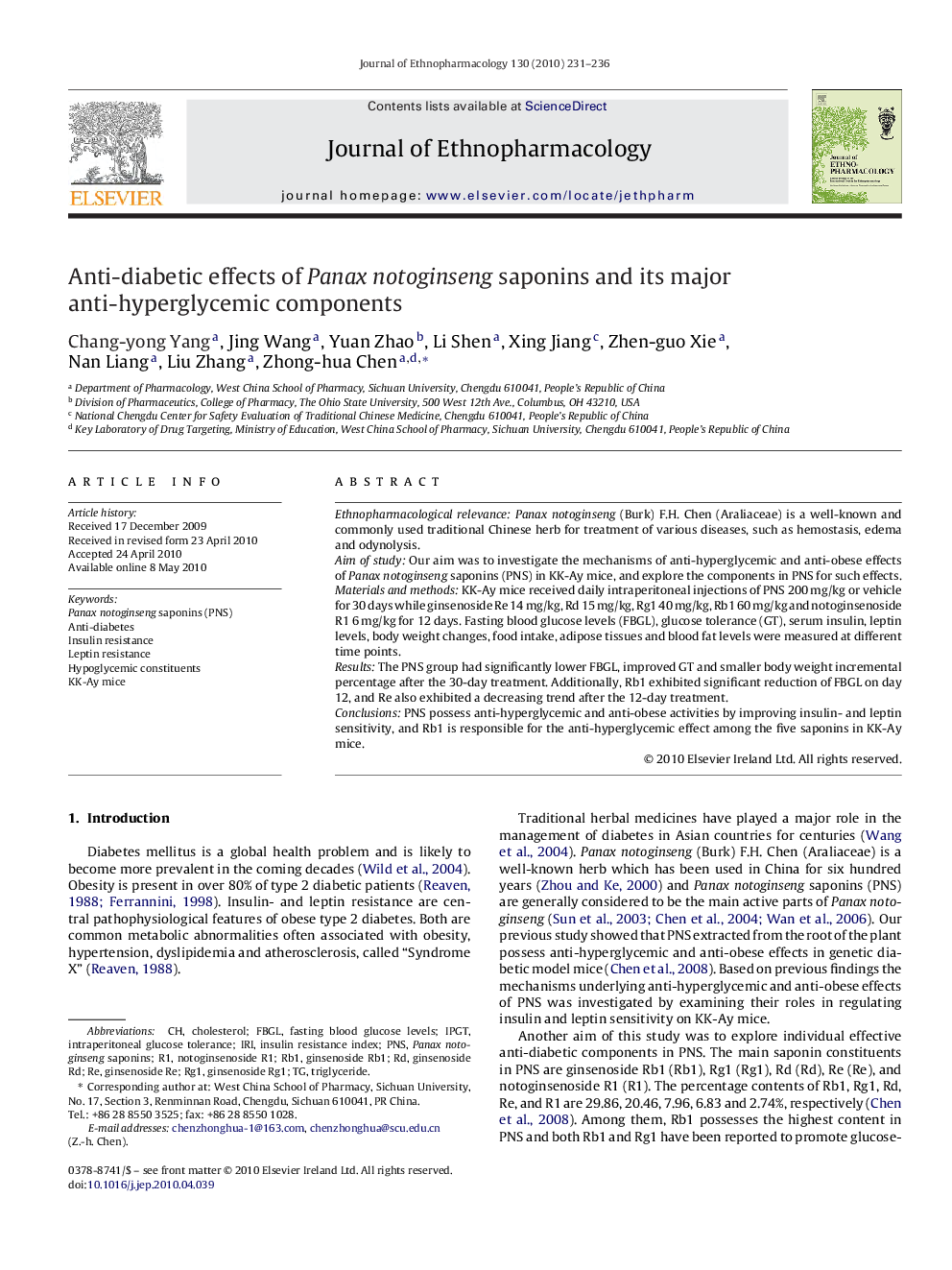| Article ID | Journal | Published Year | Pages | File Type |
|---|---|---|---|---|
| 2545941 | Journal of Ethnopharmacology | 2010 | 6 Pages |
Ethnopharmacological relevancePanax notoginseng (Burk) F.H. Chen (Araliaceae) is a well-known and commonly used traditional Chinese herb for treatment of various diseases, such as hemostasis, edema and odynolysis.Aim of studyOur aim was to investigate the mechanisms of anti-hyperglycemic and anti-obese effects of Panax notoginseng saponins (PNS) in KK-Ay mice, and explore the components in PNS for such effects.Materials and methodsKK-Ay mice received daily intraperitoneal injections of PNS 200 mg/kg or vehicle for 30 days while ginsenoside Re 14 mg/kg, Rd 15 mg/kg, Rg1 40 mg/kg, Rb1 60 mg/kg and notoginsenoside R1 6 mg/kg for 12 days. Fasting blood glucose levels (FBGL), glucose tolerance (GT), serum insulin, leptin levels, body weight changes, food intake, adipose tissues and blood fat levels were measured at different time points.ResultsThe PNS group had significantly lower FBGL, improved GT and smaller body weight incremental percentage after the 30-day treatment. Additionally, Rb1 exhibited significant reduction of FBGL on day 12, and Re also exhibited a decreasing trend after the 12-day treatment.ConclusionsPNS possess anti-hyperglycemic and anti-obese activities by improving insulin- and leptin sensitivity, and Rb1 is responsible for the anti-hyperglycemic effect among the five saponins in KK-Ay mice.
Graphical abstractEffects of Panax notoginseng saponins and its five saponins on FBGL changes in KK-Ay mice.Figure optionsDownload full-size imageDownload as PowerPoint slide
